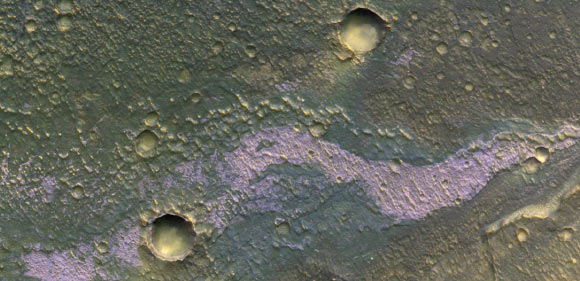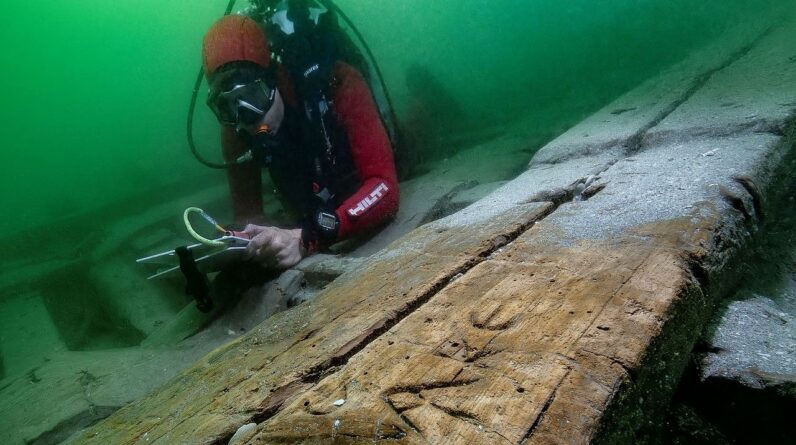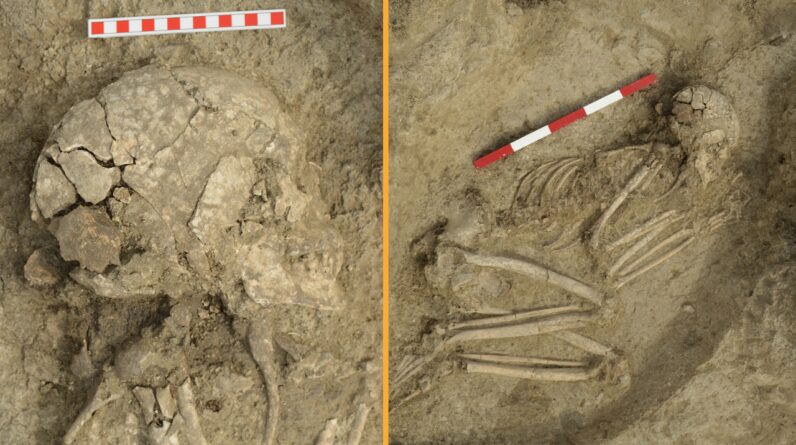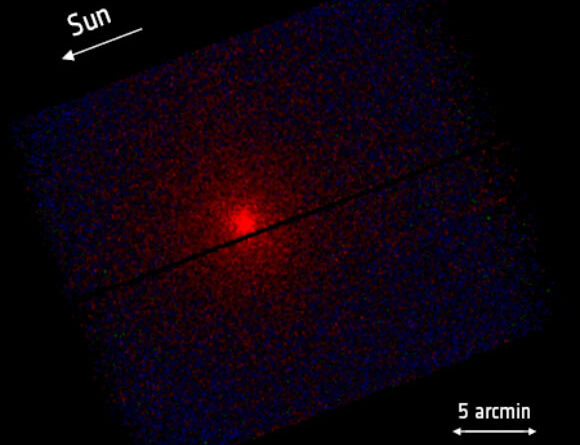
Chloride deposits are markers for early Mars’ aqueous past, with important implications for the understanding of the Martian climate and habitability. Using high-resolution color-infrared images captured by the Colour and Stereo Surface Imaging System (CaSSIS) onboard ESA’s Trace Gas Orbiter (TGO), planetary researchers have performed a planet-wide search for chloride-bearing deposits in Terra Sirenum and other regions of Mars.
This CaSSIS/TGO image shows chloride-bearing deposits (purplish, scaley wave) in Terra Sirenum, Mars. Image credit: ESA / TGO / CaSSIS.
“Mars is currently a desert world that used to be covered by rivers, lakes, and possibly oceans some 3.5 billion years ago,” said University of Bern researcher Valentin Bickel and his colleagues.
“A cold era began when Mars lost its magnetic field and could no longer hold its own atmosphere, leading to water evaporating, freezing, or becoming trapped within the surface.”
“As the water disappeared over time, it left mineral fingerprints on the surface.”
In the study, the researchers used a neural network to map potentially chloride-bearing deposits in CaSSIS images over a significant fraction of Mars.
They identified a total of 965 chloride deposit candidates with diameters ranging from 300 to 3,000 m.
“Most likely, those salt deposits formed from shallow ponds of water or brine that evaporated in the Sun,” the scientists said.
“People use a similar method to produce salt for human consumption in saltwater pools on Earth.”
“Very salty waters could have become a haven for life, a beacon for habitable places on Mars,” they added.
“High concentrations of salt allow water to remain liquid at temperatures as low as minus 40 degrees Celsius.”
“The chloride deposits in the picture above and its direct relation to liquid water make areas such as Terra Sirenum good targets for future robotic missions searching for signs of life.”
“Chloride-bearing terrain does not stand out in regular black-and-white images but shows up as a distinct purple hue in color-infrared images, making CaSSIS a unique tool to study the distribution of salts across Mars.”
“Our paper includes never-seen-before data that helps us better understand the distribution of water in Mars’ distant past,” they said.
“TGO continues to image Mars from orbit to understand its ancient past and potential habitability.”
“The spacecraft is not only returning spectacular images, but also providing the best inventory of atmospheric gases and mapping the planet’s surface for water-rich locations.”
“Understanding the history of water on Mars and whether it once allowed life to flourish is at the heart of ESA’s ExoMars missions.”
The team’s paper was published this month in the journal Scientific Data.
_____
V.T. Bickel et al. 2024. A Global Dataset of Potential Chloride Deposits on Mars as Identified by TGO CaSSIS. Sci Data 11, 845; doi: 10.1038/s41597-024-03685-3
As an Amazon Associate I earn from qualifying purchases.







